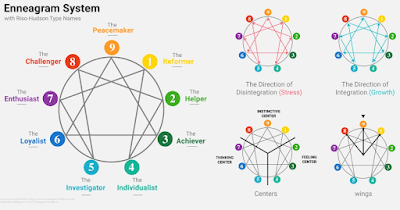Asking someone to convert to Christianity is a huge commitment. In most cases, people will have to change the entire way they view the world and their place in it. They may lose relationships with family members and friends over it, they could lose their job, and in some cases, they may even be putting their life at risk. That’s a big commitment when you put it all out there at once. But is there a way to ease people into it so it doesn’t seem so daunting?

The foot-in-the-door technique is a way to start with a small, minimal commitment or agreement and build to a much larger commitment. This technique can be used to manipulate people, as is often done with sales, or to help people reach the logical conclusion of their owns views without fear and social pressure. But this technique is just part of the overarching principle of commitment and consistency, which is used to encourage people to act on their desires, to up-sell products or add-ons, and to increase loyalty.
The main idea behind this principle is that people don’t like to appear inconsistent because it suggests they are unintelligent, ignorant, incompetent, untrustworthy, or any number other of bad things. Therefore, when somebody agrees to something, takes a stance on a topic, or invests their resources into it, they are increasingly likely to stand by their initial position at all costs.
Another aspect of this principle is uncertainty. In the previous article on social proof, I noted that people often look to others when they are uncertain. While this is still true, what if there there isn’t a clear indication of what others would do in a situation? In these cases, people will often look to their own behavior for guidance on future behavior. This principle is particularly effective for older people who value consistency more than younger people.
This is the principle apologists are probably most apt to use, even if they are not aware of it, and is the focus of the book Tactics. The way it’s often used is to point out or draw attention to inconsistencies in a person’s worldview or beliefs. While this is a good and effective method, the use of it can be expanded to be even more effective.

Consent or Agreement
In order for this principle to work, people must make some sort of commitment to a position. This may seem obvious, but it’s probably where people fail the most. What I see apologists do most often, myself included sometimes, is to make a statement that I know the other person agrees to, then say something like, “you agree, right?,” and then move on before allowing them to consent or express their agreement.
It may sound odd or useless, but the research shows that the simply act of allowing the person to respond will increase their commitment to the position. Don’t assume they agree, and even if you know they do, let them say it. When they say it, it feels like their own choice and it makes them take ownership over the position so that they will be much less likely to flip flop later. If they do try to change views later, both of you are much more likely to remember what they said before if they actually expressed the view on their own instead of it only be assumed.
Type of Consent or Agreement
People can believe something without ever sharing it or letting anybody know. These private views are much more subject to change than public ones. As a result, you want to get people to make a public statement where they agree with Christianity, and then build from these agreements slowly, without having them voice disagreements. The key here is to get people to agree with you as publicly as possible. Instead of asking someone to think of something good Christianity has offered to the world, get them to verbalize it, and ideally, get them to do so in front of as large an audience as possible.
Even better than a verbal commitment is a written one. Have people write their view on something fairly permanent. One study showed the writing on paper rather than on a white board-like device was more effective at getting people to remain consistent. It may seem a little awkward or forced to do this, but if you get the chance, ask people to write down what they believe. I know a lot of campus ministries use surveys to start conversations. Try adding a section for people to actually write what they believe, but make sure it is something that you agree on.
For instance, you can have them write the statement “Rape is objectively wrong.” Almost everyone will agree to that. From there, you can have them write something like, “objective morals do not change based on personal opinion.” Once someone agrees to these statements, which almost everyone will, they’ve locked themselves into the position that inevitably follows, that objective morals can only come from God, and therefore, God exists.
Another tactic some people use it petitions. You get people to sign their name on a petition that nobody would disagree with. Once they’ve signed, they’re more willing to talk about the issue and get involved with it.

Cost & Commitment
Taking a position on an issue and then making that position known to others is an emotional and social cost. If they change their view, it will embarrass them, damaging their price, and it can affect their reputation. This is highly effective, but it’s not the only way people can commit to something. People can also commit with time and money.
It may take a little more ingenuity to get people to give time or money, especially if they disagree with you, but there are ways to do it. You can ask for donations to a cause that is mutually recognized as beneficial, and once they associate you with the cause, they will be more prone to commit. If you have regular apologetics meetings, try having a curriculum and require people to buy a book or some other resource to participate. You can do the same with time. Offer to meet someone for coffee to talk about a particular issue. You can even offer to buy (you’re trading the opportunity for a financial commitment for a time commitment andreciprocity,which is a great trade).
The key is to start small, especially with non-believers, and slowly ask for greater commitment. You don’t have to do this right away either. Go have coffee with someone to talk about religion, and then wait a few days before you call them to say “Hey, there’s a Reasonable Faith meeting (or some other apologetics event) going on in a few days. Would you like to attend with me so you can find out more about the questions you were asking.”

Conclusion
The number one way to apply this principle is by slowing down conversations, which can be especially hard online. Have patience and wait for people to respond in agreement. Build from where there is agreement rather than going directly to the points where you disagree. It may seem more efficient to focus on disagreements, but it’s less effective because it solidifies the person’s commitment to their own position and requires you to spend the social capital you’ve built with them.
It’s a lot easier to get people to agree to small requests, so start small and built towards bigger agreements. However, don’t push too hard, too fast, or they will feel uncomfortable and back out. Make sure you allow people to express their view verbally or in writing, then build from there. You can sometimes do this right away, but it can also be done over long periods of time such as days, weeks, or months. Don’t think that you have to get people to agree to everything you believe all at once. Leave the door open for future conversations and keep building upon what they agree on.
Some people have the tendency to err by pushing too hard, some err by not being direct enough. Find the golden mean between these two areas, using commitment along the way to help be more effective and provide a little more wiggle room for error. The next principle I will discuss is scarcity, which is a tricky one to apply to evangelism and apologetics, but it can be done.
Works Cited
This article was adapted to evangelism and apologetics from a chapter in Cialdini, R. B. (2009). Influence: Science and practice 5th ed. Boston, MA: Pearson education.



